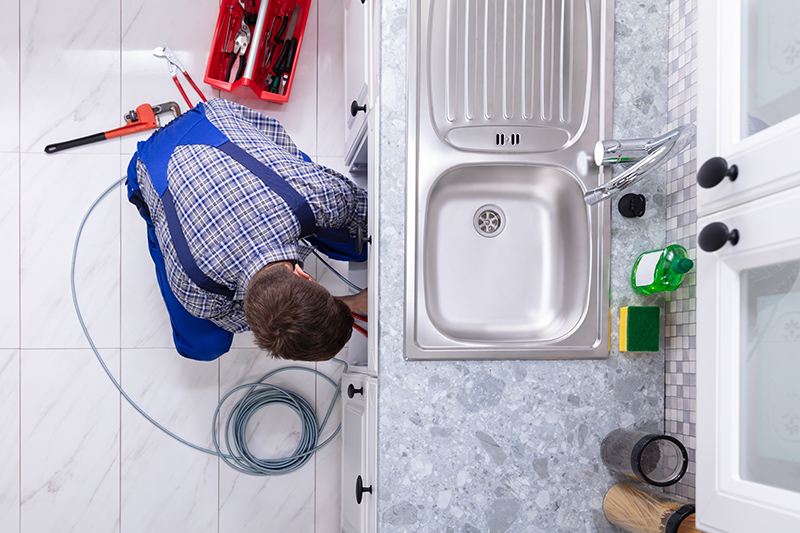The Best Ways to stop Restroom Mold
Understanding and Using a P-Trap in Plumbing ============================================
When it concerns pipes, the P-trap plays a necessary function in preserving a healthy and balanced setting in your home. Its simple layout and function may appear straightforward, yet there are nuances and details that can impact its effectiveness. Knowing how to effectively mount, keep, and troubleshoot P-traps can save you from potential migraines down the line. So, let's check out the details of the P-trap and how mastering its usage can make a considerable difference in your pipes system's performance and general wellness.
Secret Takeaways
- P-Traps catch water to stop sewage system gases.
- Usage PVC, ABS, or steel for P-Traps.
- Routine upkeep makes certain proper function.
- P-Traps protect against nasty odors in pipes.
- Appropriate setup and cleaning are essential.

Relevance of P-Traps in Plumbing


Comprehending the relevance of P-Traps in plumbing is important for keeping proper water drainage and avoiding hazardous drain gases from entering your home. When it involves P-Trap installation, making use of the appropriate materials is crucial for ensuring the performance of this important pipes element. P-Traps are generally made from products such as PVC, ABDOMINAL, or metal, with PVC being an usual choice due to its durability and resistance to deterioration. Proper setup of the P-Trap involves connecting it securely to the drainage pipeline from your sink, shower, or bath tub, developing a water seal that stops drain gases from backing up into your living space.
Picking the right products for your P-Trap setup is vital to its performance and long life. https://ladbrokegroveplumber.co.uk PVC P-Traps are light-weight and simple to deal with, making them perfect for do it yourself jobs. Nevertheless, metal P-Traps may be chosen for their resilience in high-temperature settings. Whichever product you pick, ensuring a limited seal and correct positioning during installation is critical for avoiding leaks and keeping a healthy pipes system in your house.
Just How P-Traps Job
Allow's talk about exactly how P-Traps work in your plumbing system. P-Traps feature by capturing water to produce a seal that avoids sewage system gases from entering your home. Recognizing this device is vital for maintaining a healthy and odorless environment in your house.
P-Trap Feature
The P-trap plays a substantial role in stopping drain gas from entering your home by creating a water seal. When it concerns P-trap installation, make sure it's correctly positioned under your sink or component. This U-shaped pipeline catches a small amount of water, which serves as a barrier, blocking foul smells and hazardous gases from taking a trip back up via the drain. P-traps can be made from various products like PVC, ABDOMINAL MUSCLE, or metal, and be available in different sizes to accommodate various pipes arrangements. The benefits of a P-trap extend past smell prevention; they also catch debris, stopping blockages even more down the line. Keep in mind, keeping your P-trap is important for its proper function. Routinely look for leakages, clear out any kind of caught particles, and verify the water seal stays intact. By recognizing exactly how your P-trap functions and its significance in your plumbing system, you can maintain your home scenting fresh and your drains pipes moving smoothly.
Water Seal Relevance
To understand the significance of the water barrier in a P-trap, think about exactly how this simple block properly prevents nasty odors and harmful gases from entering your home via the pipes system. When you mount a P-trap effectively, ensuring it preserves an appropriate water seal is vital for preventing undesirable odors from permeating back right into your living space. The water in the P-trap produces a seal that functions as a barrier, capturing sewer gases and avoiding them from rising up the drainpipe and right into your home. By preserving this water seal with routine use of components and appropriate maintenance, you can efficiently prevent unwanted smells and preserve a healthy indoor atmosphere. If the water seal in your P-trap dries out as a result of seldom usage or inadequate installment, odors from the sewer can infiltrate your home, causing discomfort and possible carcinogen. Taking note of the water seal in your P-trap is essential for effective odor prevention and total plumbing system functionality.
Avoiding Sewer Gas
Recognizing just how P-traps work to stop drain gas from entering your home is important for preserving a healthy indoor environment. When set up correctly, P-traps develop a water seal that blocks sewage system gas odors from backing up right into your living spaces. The setup of a P-trap below sinks, bath tubs, and various other pipes components is very important for this objective.
Among the considerable benefits of P-traps is that they properly avoid sewage system gas smells from penetrating your home. The water being in the trap creates an obstacle that stops gases from the drain system from taking a trip up through the drainpipe and right into your house. This easy yet inventive layout is an affordable and effective method to maintain a pleasant and sanitary atmosphere inside your home.
Frequently checking and keeping your P-traps can assist they continue to work correctly and keep sewer gas smells away. By consisting of P-trap examinations in your home maintenance regimen, you can take pleasure in the benefits of a fresh-smelling home cost-free from unpleasant sewer odors.
Typical P-Trap Issues
Usual problems with P-Traps commonly entail blockages caused by particles or incorrect setup. If you observe a leak in your P-trap, it's vital to act immediately to stop water damage. Leaks can occur because of loose connections or rust. To repair a dripping P-trap, begin by tightening the slip nuts or replacing the washing machines. If the leak continues, take into consideration replacing the whole trap to guarantee a correct seal.
Another common issue with P-Traps is foul smells emanating from the sink or drain. These odors are commonly brought on by microorganisms build-up in the trap. To eliminate smells, try putting a combination of cooking soft drink and vinegar down the drain, followed by warm water. You can likewise make use of commercial drain cleaners specifically developed to fight odor-causing microorganisms. Routinely cleaning your P-Trap can help stop these smells from persisting, maintaining your pipes system fresh and odorless.
Preserving Your P-Trap
Normal maintenance of your P-Trap is important for preventing clogs and odors in your plumbing system. To preserve your P-Trap effectively, beginning by guaranteeing it was effectively mounted. Check for any type of leakages or loosened links that can bring about future concerns. For upkeep pointers, think about utilizing cleaning strategies like pouring a mixture of hot water and vinegar down the drain to liquify build-up. Additionally, regularly removing debris and hair from the trap can assist protect against blockages. If you come across minor problems, such as slow water drainage, take into consideration do it yourself repairs like using a pipes serpent to remove any blockages. Keep in mind to use handwear covers and adhere to safety preventative measures when trying any fixings. By remaining proactive with maintenance and resolving problems promptly, you can maintain your P-Trap operating efficiently and stay clear of expensive repair work in the future.
Troubleshooting P-Trap Issues
To troubleshoot P-Trap issues efficiently, begin by determining any kind of signs of blockages or leaks in your plumbing system. P-Trap blockages are a common issue that can cause slow drainage or water back-ups. If you suspect a blockage, attempt making use of a bettor to remove the obstruction. For stubborn blockages, a pipes snake can be utilized to separate the particles creating the obstruction. Another solution for P-Trap blockages is to blend baking soda and vinegar, pour it down the drain, and flush with warm water after allowing it sit for a long time.
Drip detection methods are important in recognizing any kind of prospective issues with your P-Trap. Look for water discolorations or mold around the P-Trap location, as these can indicate a leak. A straightforward way to identify leakages is by drying the location around the P-Trap totally and afterwards putting a paper towel below it. If the paper towel ends up being damp, there may be a leakage that needs to be resolved promptly. Regularly examining your P-Trap for obstructions and leakages can aid maintain a properly operating plumbing system.
Tips for Making Use Of P-Traps Efficiently
For effective application of P-Traps in plumbing, routinely flush your drains pipes with warm water to avoid clogs and preserve proper drainage circulation. When it concerns installment pointers, see to it the P-Trap is appropriately aligned and securely attached to prevent leakages. Regular maintenance is key to efficiency. Correct cleansing of the P-Trap includes getting rid of any debris or buildup that can obstruct water flow. Efficient sealing of the links utilizing plumbing's tape or sealant can prevent leaks and keep the honesty of the catch.
To effectively use P-Traps, check them occasionally for any indications of wear or damages. Replace any type of worn-out components immediately to prevent leaks and guarantee smooth procedure. Additionally, stay clear of making use of severe chemicals that can corrode the catch and select enzyme-based cleansers for a more mild yet efficient cleansing procedure. Bear in mind, proper maintenance and treatment of P-Traps are vital for the durability and efficiency of your plumbing system.
Regularly Asked Questions
Can a P-Trap Be Mounted Up And Down As Opposed To Horizontally?
Yes, a p-trap can be set up vertically, however it may have disadvantages. While vertical installment saves room and can be easier to conceal, it can cause obstructions as a result of inefficient water circulation. Upkeep is essential for p-traps to avoid typical problems like odors and obstructions. Routine cleansing and looking for leakages can aid you prevent pipes troubles in the future.
Do All Fixtures in a Home Demand Their Own P-Trap?
You don't need different p-traps for each component. Shared p-traps prevail in homes, yet plumbing regulations differ. Efficiency-wise, having a single p-trap for numerous components can function well if installed correctly. Warranty correct venting and drainage to prevent concerns. Constantly adhere to regional plumbing laws to confirm your configuration is risk-free and compliant. A properly designed system can efficiently share a p-trap amongst several components without issues.
Can a P-Trap Be Moved Without Professional Assistance?
Yes, you can transfer a P-trap without expert aid, but proceed with care. DIY setup may save money, yet there are possible dangers. Relocating a P-trap can present obstacles as a result of pipes intricacies. It's a good idea to seek expert recommendations to secure correct relocation and prevent difficulties.
Are There Alternative Products for P-Traps Apart From Pvc?
Yes, there are alternative materials for p-traps apart from PVC. Stainless steel, brass, copper, and cast iron p-traps are some of the different choices available. Metal p-traps use toughness and can be a stylish choice for your plumbing requires. Consider these options when looking for a sturdy and durable solution for your pipes system.
Just how Do You Protect Against Foul Smells From Appearing of a P-Trap?
To keep odors far from your p-trap, normal upkeep is vital. Do it yourself solutions like putting sodium bicarbonate and vinegar down the drain can assist protect against nasty smells. Odor control is important for a fresh-smelling restroom, so make certain to cleanse your p-trap regularly. Proper maintenance will certainly keep your plumbing system smelling clean and working smoothly.